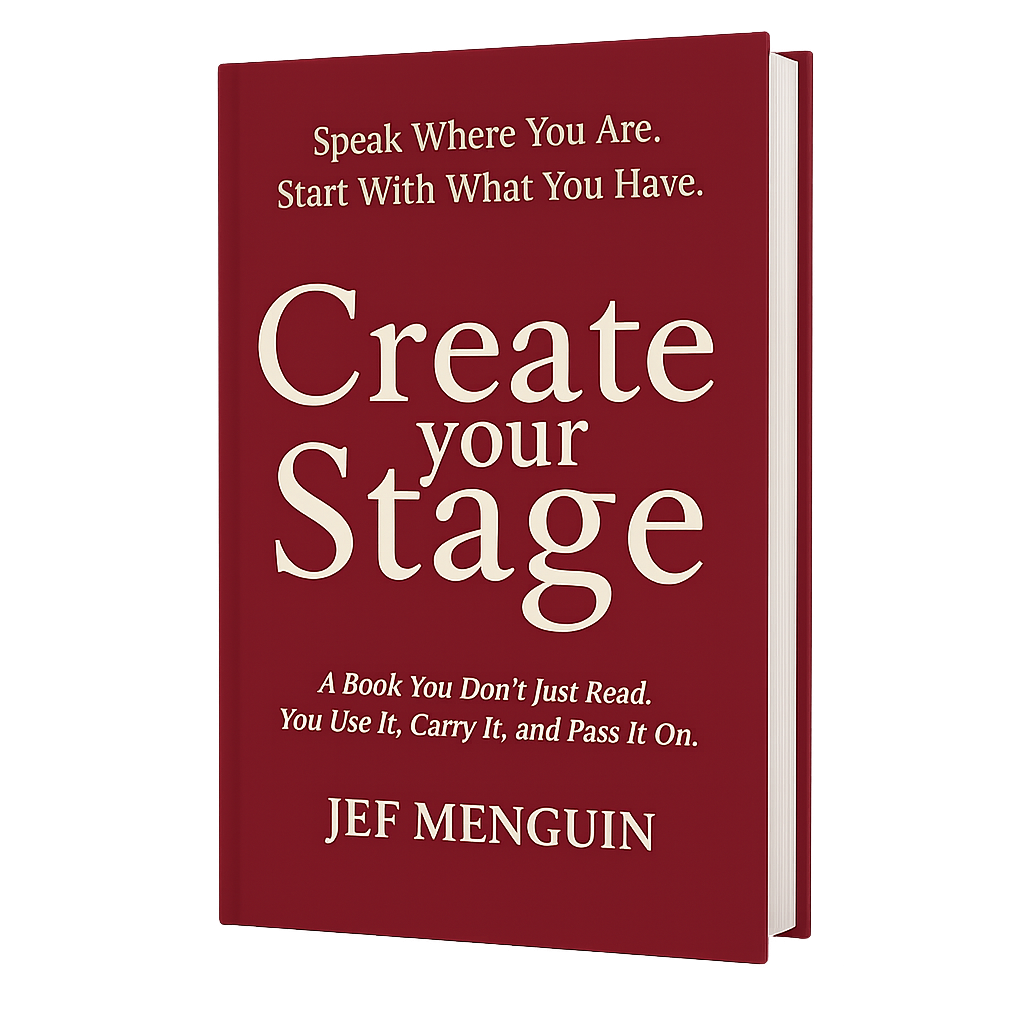Not everyone who will introduce you knows how to introduce a speaker.
Some will use the moment to shine, delivering a performance that draws the spotlight to themselves rather than preparing the audience for you. Others won’t prepare at all. They’ll pick up your curriculum vitae—maybe five pages long—and read every line to a bored audience.
If you’re a speaker, that’s a problem. Because an introduction is not decoration. Its direction. It sets the frame for your message and primes the room to listen.
That’s why every speaker must prepare their own introduction.
And the good news? There’s a simple way to do it: the T-I-P Framework—Topic, Importance, Presenter.
Let’s break it down.
T = Topic of Your Speech
The audience wants to know: What will this be about? Why am I here?
The introduction should name your topic clearly. It can include your title or headline. It can also hint at the problem you intend to solve or the opportunity you’ll reveal.
Example (basic):
“Our speaker today will share the Secrets of the One Percent Principle—a powerful way to create daily progress that compounds into massive results.”
Notice what’s happening here: the topic is not vague. It’s specific. It creates curiosity.
Now let’s bring in a story from Work Like an Artist.
In Chapter 1, I wrote about ending a workday with 62 emails, four meetings, two reports, and a splitting headache—yet no progress that mattered. That’s a topic right there. A speech that begins with this story could be introduced like this:
“Have you ever ended a day exhausted, but when you look back, you realize nothing truly moved forward? Our speaker has lived that struggle—and discovered a better way. Today, he’ll share how to stop drowning in busyness and start working like an artist.”
The topic is clear. The hook is human. And the audience leans in.
I = Importance of the Speech to the Audience
Once the audience knows what you’ll talk about, they need to know why it matters to them.
This is where many introductions fail. They stay in the realm of credentials, when they should be in the realm of relevance.
The introduction should tell people how your message will ease their pains, meet their desires, or open a door they haven’t considered.
Example (basic):
“This is important because many of us want to grow faster in our careers and contribute more to our organization. After listening, you’ll learn a simple, effective way to multiply your value every single day.”
Let’s use another example from Work Like an Artist. In Chapter 2, I described the “busy trap”—the exhaustion of saying yes to every urgent request and ending each day feeling hollow. Imagine this as the backbone of a speech. The introduction could sound like this:
“Too many of us wake up, check our emails, and spend the whole day putting out fires. By the end of the day, we’re drained—but nothing has moved forward. Today’s speaker will help us escape that busy trap and rediscover how to focus on work that actually matters.”
Now the audience knows: this isn’t just about theory. It’s about their lives, right now.
P = Presenter: The Person Behind the Message
Finally, the introduction should establish credibility—not by listing every degree and title, but by connecting the speaker’s experience directly to the topic.
You want the audience to think: This person has walked the path. I can trust them to guide me.
Example (basic):
“To guide us, we invited Jef Menguin, an international speaker, corporate trainer, and educator who has helped leaders and professionals apply the One Percent Principle in their daily work.”
Again, notice the focus: not all achievements, just the ones relevant to the speech.
Now, picture this linked to a Work Like an Artist theme. Suppose I’m speaking on Chapter 5: Your Work Is Not Your Worth. The introduction could be:
“Today’s speaker once measured his value by how many proposals he wrote and how many workshops he delivered. He knows what it feels like to tie identity to productivity—and he knows the cost. He’s here to show us why our worth is not in how much we do, but in how deeply we move the work that matters. Please welcome, Jef Menguin.”
That’s it. The audience doesn’t need my whole résumé. They just need to know why I’m the right person for this message.

Why T-I-P Works
The beauty of the T-I-P framework is its simplicity.
- Topic clarifies what’s coming.
- Importance makes it relevant to the audience.
- Presenter establishes credibility and sets you up to deliver.
Most introductions fail because they skip one of these. Some focus only on the presenter, turning the intro into a brag sheet. Others focus only on the topic, leaving people unsure why it matters. T-I-P ensures balance.
How to Use T-I-P in Practice
- Write two versions: a 50-word and a 100-word introduction. This gives flexibility to whoever is introducing you.
- Send both in advance: Email them to the emcee or organizer. They’ll thank you for making their job easier.
- Keep it conversational: Write it as if it will be read aloud. Short sentences. Simple words. No jargon.
- Test it out loud: Read it to yourself. If it sounds like a résumé, rewrite it until it feels like an invitation.
Examples of T-I-P Introductions
Here are three sample introductions, inspired by Work Like an Artist.
Example 1 – Stop Working Harder. Start Working Like an Artist.
- Topic: “Have you ever ended a workday exhausted but with nothing meaningful done? Today’s speaker will show us why working harder is not the answer—and why working like an artist changes everything.”
- Importance: “This matters because so many of us confuse busyness with value. By the end of this talk, you’ll discover how to reclaim your energy and your best work.”
- Presenter: “Our guest is Jef Menguin, a speaker and strategist who helps leaders design lives of clarity and momentum. Let’s welcome him now.”
Example 2 – Your Work Is Not Your Worth.
- Topic: “Too many professionals tie their identity to productivity. Today’s speaker wants to set us free from that trap.”
- Importance: “This message matters because if we confuse our worth with our work, we burn out faster—and miss the deeper purpose of what we do.”
- Presenter: “Our guest, Jef Menguin, has helped thousands of leaders shift from exhaustion to clarity, and he’s here to help us do the same.”
Example 3 – Pay Attention to Your Intention.
- Topic: “We all say we want to focus, but focus means nothing if it’s pointed at the wrong thing. Today, we’ll learn how to align attention with true intention.”
- Importance: “This matters because the gap between what we say we want and how we actually spend our days is where most of our frustration lives.”
- Presenter: “Our guest, Jef Menguin, is a coach and trainer who teaches leaders how to design days that reflect their deepest values. Let’s welcome him now.”
The Shift You Create
When you prepare your own introduction, you don’t just make life easier for the emcee. You shape the very first impression your audience has of you. You prime them to listen. You save them from boredom.
But more than that—you lead before you even step on stage.
Because the introduction isn’t about you. It’s about the audience. It’s about showing them what they’re about to receive, why it matters, and why they should trust the voice delivering it.
So the next time you’re invited to speak, don’t just send your CV. Don’t just trust that someone else will get it right.
Use T-I-P. Topic. Importance. Presenter.
And watch how much smoother, sharper, and stronger your speech begins.
FAQ
Download your copy of T-I-P Speaker Introduction Framework










